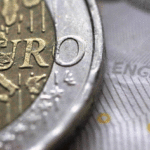West Texas Intermediate and Brent crude rose for the first time in three sessions after capping a fifth weekly decline as ongoing clashes between government forces and Islamist militias kept Libyan supply curbed.
US crude for delivery in February traded 1.04% higher at $55.30 per barrel at 8:14 GMT, having shifted in a daily range of $55.74-$54.94. The contract plunged 1.99% on Friday to $54.73, settling the week 4.2% lower.
Meanwhile on the ICE, Brent for settlement in the same month was up 0.84% to trade at $59.95 a barrel. Prices ranged between a daily high and low of $60.40 and $59.65 a barrel, respectively. The contract fell 1.3% on Friday to $59.45, registering a 3.1% weekly drop. Brent was at a premium of $4.65 to its US counterpart, down from $4.72 at the previous sessions end.
The oil market rebounded on Monday as continuing clashes in Libya eased speculations of a worsening global supply glut. Around 800 000 barrels of crude oil, or two days of the countrys current output, have been destroyed by fire.
According to Ali al-Hasy, a spokesman for the Petroleum Facilities Guard, a government force which guards the countrys eastern ports, fire has been extinguished at three of five tanks at Es Sider, Libyas largest export terminal. The fires started on December 25th after Islamist militias responded to an ultimatum before air strikes with rocket fire. Fighting at Ras Lanuf, the countrys third-biggest port, also halted operations this month.
Jonathan Barratt, chief investment officer at Sydneys Ayers Alliance, said cited by CNBC: “Libya, and all the other problems, warrants some kind of risk premium. Oil is at a level where people are happy to build in a risk premium.”
OPEC policy
Oil prices have fallen more than 40% this year, headed for their biggest annual decline since 2008, as OPEC resisted calls from smaller members to cut output at times of ever-growing US crude production. The groups leading producers have underscored their determination to cope with even lower prices in order to defend market share.
“Whether it goes down to $20, $40, $50, $60, it is irrelevant,” Saudi Arabian Oil Minister Ali Al-Naimi was cited saying, referring to production levels relative to oil prices.
Meanwhile, Saad Al-Hadithi, a spokesman for the Iraqi prime minister’s office, said that Iraq approved a budget of 123 trillion dinars ($103 billion) for 2015, compared to previous plans of 141 trillion dinars. The spending plan was based on oil prices of $60 per barrel and reflected the second-biggest OPEC producer’s adjustment to the market’s current state and the country’s willingness to defend its market share.
Algerian Energy Minister Youcef Yousfi, cited by the Associated Press, called on OPEC to cut output to boost prices, saying the group needs to intervene to correct the markets imbalance and defend the income of member states. However, the group had previously said that it doesnt plan an extraordinary meeting before the next scheduled one, with leading producers seen firmly standing behind their decision to protect market share.
Economy
A brighter US economic outlook provided some support, with Commerce Department data last week showing that the US economy blew past expectations and expanded by 5% in the third quarter, while consumer sentiment in December reached a pre-recession high, according to the University of Michigan.
However, a stronger dollar, boosted by the upbeat US data, also weighed on the oil market. The dollar hovered near the highest since early-2006 against a basket of six major trading partners. A firmer greenback makes dollar-denominated commodities pricier for foreign currency holders and limits their appeal as an alternative investment.
Some support was also drawn by China and Japan planning to boost liquidity. The Peoples Bank of China intends to loosen loan-to-deposit ratios for banks in 2015, CNBC reported, while the Japanese government approved on Saturday stimulus spending of the equivalent of $29 billion to aid the countrys slower developing regions.
Pivot points
According to Binary Tribune’s daily analysis for Monday, West Texas Intermediate February futures’ central pivot point is at $55.28. In case the contract breaches the first resistance level at $56.04, it may rise to $57.36. Should the second key resistance be broken, the US benchmark may attempt to advance $58.12.
If the contract manages to breach the first key support at $53.96, it might come to test $53.20. With this second support broken, movement to the downside could continue to $51.88.
Meanwhile, February Brent’s central pivot point is projected at $59.88. The contract will see its first resistance level at $60.54. If breached, it may rise and test $61.64. In case the second key resistance is broken, the European crude benchmark may attempt to advance $62.30.
If Brent manages to penetrate the S1 level at $58.78, it could continue down to test $58.12. With the second support broken, downside movement may extend to $57.02 per barrel.





